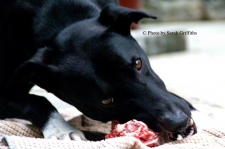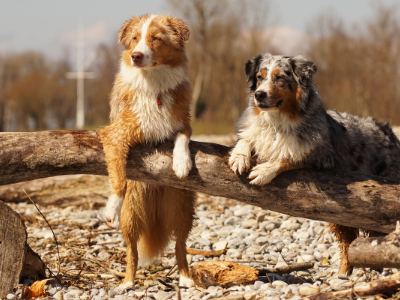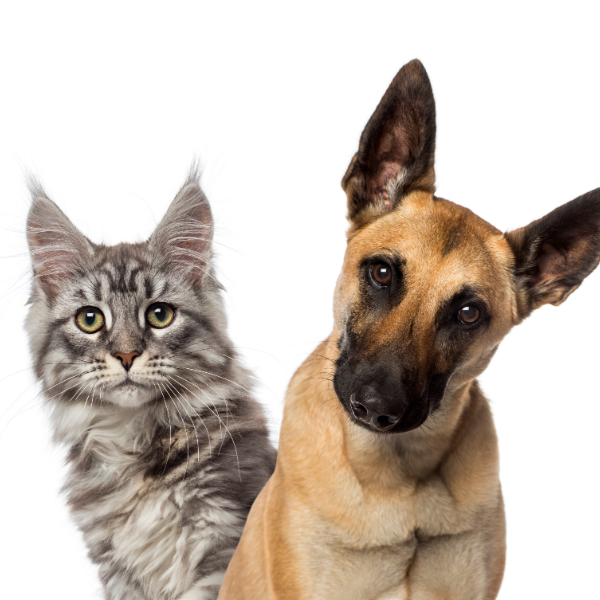The General Rules of Switching to a Raw Diet
There are some rules of thumb that every pet owner should be aware of before switching their pet to raw:
1. Have a plan. Before your start, the switch, have a plan that fits your pets' individual needs. Your raw pet food retailer or a pet nutritionist can help determine the best route for switching your pet easily and safely. Depending on your pets' age, weight, health status, and current diet, different methods may apply. Use your resources to make this easy for yourself. A professional pet nutritionist or holistic vet has usually seen it all and can help to determine the best route.
2. Wait one month before introducing whole raw bones. This does not include ground poultry bones that are included in our chicken, turkey, duck, and pheasant meals. The digestive system needs time to adjust to the new foods so use ground meats and bones to start.
3. If your pet has digestive concerns or allergies, switch your pet to raw with a professional. Animals with compromised digestive abilities or food sensitivities may need a bit of extra help. They may need supportive supplementation in the beginning or may require it long-term. A pet nutritionist or holistic vet can help. A raw diet will usually improve allergies and digestive concerns when done correctly.
4. Go slow. If your pet is used to eating the same food day in and day out (commercially prepared foods), they may have digestive upset when a variety of new, fresh foods are introduced. Most pets can switch to raw gradually over a 7-10 day period. Start with small raw meals and increase raw while decreasing the current commercial diet. If, at any stage, your pet experiences digestive issues, go back to the last ratio of foods that did not cause an issue and go slower with your increase of the raw over the next several days.
5. Choose one protein to start with. Choosing one protein such as chicken or turkey to start with is ideal. Once your pet has made the full switch, you can start to vary the diet. For more details on varying the diet, click here.
6. Choose your format. There are different options for compiling a balanced raw diet. The major ways include pre-packaged meals, pre-packaged components (meat, organs, bones, veggies), or making your own. You can also use a combination of all three methods. Pick the method that works best for you. Most people start with pre-packaged meals to make the switch easier.
The Safe Ways to Switch
1. Kibble. If your pet eats kibble, a good trick is to start soaking the dry food with warm water or unsalted chicken broth. Usually, pets enjoy this. Adding more moisture to the diet ensures that your pet is properly hydrated and ready to make dietary changes. Also, remember to keep kibble and raw meals separate during the switch to avoid digestive upsets.
2. Canned food. If your pet eats canned, the switch is usually quite easy. You can safely mix canned and raw foods together starting with a small amount of raw and increasing raw while decreasing canned over a 7-10 day period. It is ideal to switch from a holistically prepared, grain-free canned food to a raw diet. The switch is generally easier this way.
3. Cooking boneless meats. If you cook ground boneless meats for your pet, you can simply decrease the cooking time over a 7-10 day period until the food is completely raw. Shortly after starting the raw diet, you will want to ensure that you are balancing the muscle meat, bone, organ meats, and vegetables in the diet.
4. Introducing whole bones. As mentioned before, whole bones should be introduced after the first month of your pet eating a completely ground raw diet. Good bones to start with are soft poultry bones such as chicken or turkey necks. Then you can graduate to larger necks such as lamb or elk necks (if appropriate), beef and buffalo femurs, and knucklebones. For more information on how to choose the right bones for your pet, click here.
5. Healing crises. Sometimes a pet will experience a brief flare-up that may involve the skin, eyes, or digestive tract. Don't panic. Minor healing crises are often reported followed by the emergence of a newer, healthier pet. If the symptoms last for more than 48 hours or seem particularly severe, contact your vet.
6. Choose high-quality raw foods. Be sure that you are choosing high-quality foods that contain lean muscle meats. Cheaper is not better. Most cheap raw diets are made from animal trim which is high in saturated fat and has been known to induce pancreatitis in some pets. For more information on how to choose the best foods, click here.
Helpful Tips
1. Picky Pet? Many pet owners run into challenges with fussy eaters. Don't give up. You must listen to what your pet is telling you in order to find the solution. For a list of tips and tricks for picky pets, click here.
2. Be patient! Commit to your plan. There is a learning curve with feeding a raw diet and one day, it will all be a routine.
3. Balancing the foods. This is usually the trickiest part to wrap our heads around. You will need to do some research to help it all make sense but there are many resources out there to ease the confusion.
4. There is always a solution. When you run into problems, there is always a logical solution. Use your resources and your common sense to solve issues or answer questions you may have. Chances are, you're not alone with your experiences.
Allergies and Food Sensitivities
Often, a novel protein format to the raw diet is needed for animals with severe food sensitivities or allergies. This is also the best way to ensure that you are completely aware of which foods cause problems for your pet. Let a professional help you with this. Animals with these issues often benefit the most from a raw diet.
Supportive Supplementation
Two effective supplements for supporting and restoring a healthy digestive tract are probiotics and digestive enzymes. Different products may be available depending on where you live so check with your local pet health food store.
I'm hoping this will clear up some of the confusion about switching to a raw diet and happy feeding!



